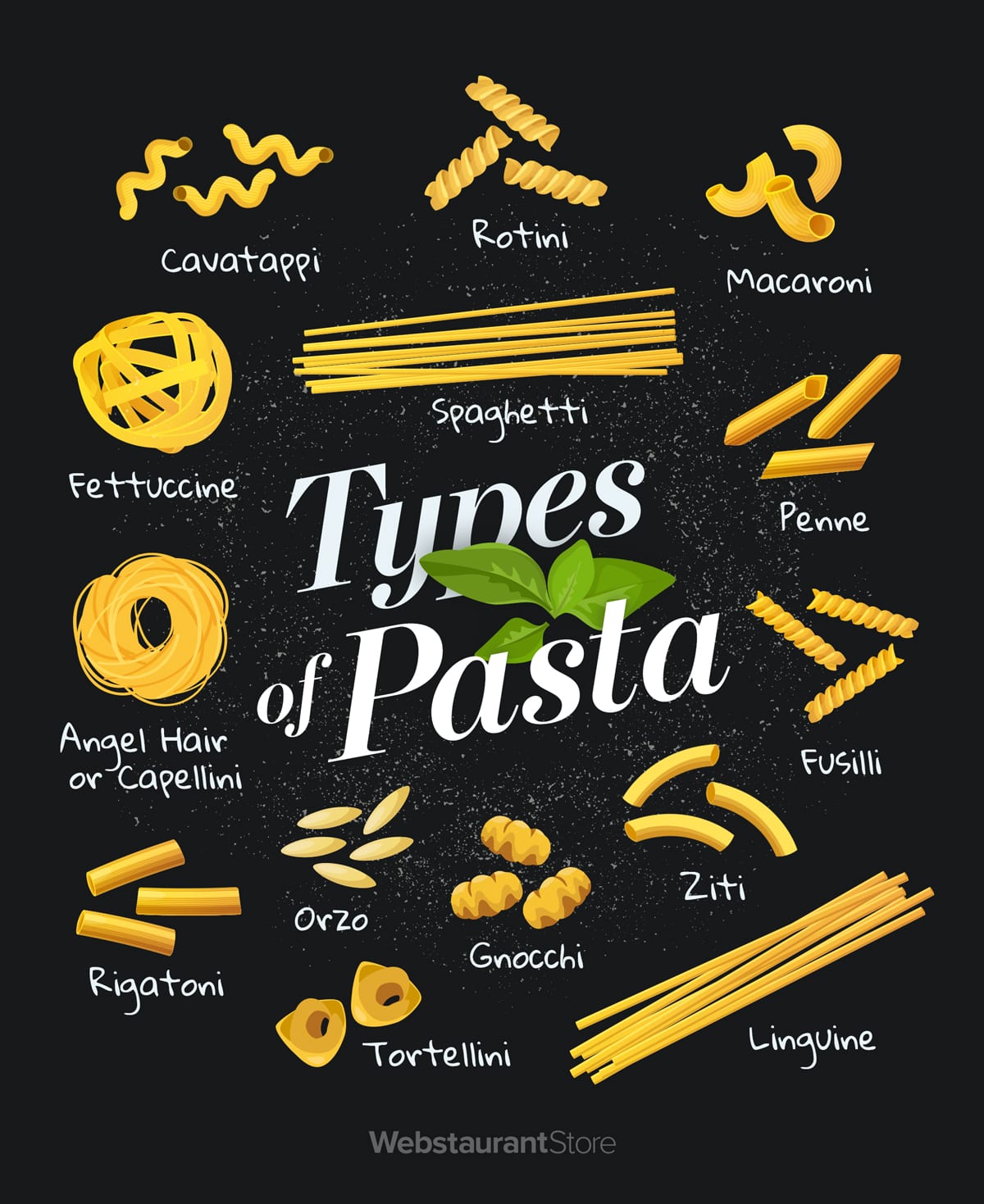
- Topics 1532
- Industrial 59
- Troubleshooting Guides 31
- Restaurant Management 140
- Bar Management 66
- Catering Tips 38
- Bakery Management 48
- Food Trucks & Concessions 47
- Advertising & Marketing 40
- Eco-Friendly Tips 12
- Facility Layout & Design 50
- Coffee Shop Tips 31
- Installation & Maintenance 59
- Janitorial & Pest Control 35
- Safety & Sanitation 110
- Startup Tips 113
- Menu Design 11
- Kitchen & Cooking Tips 104
- Hospitality Management 24
- Pizza & Sandwich Shop Tips 30
- Smallwares 40
- Food Prep 101
- Tabletop Items 19
- Disposables 26
- Calculators & Tools 8
- Consumables 70
- Warewashing & Laundry 21
- Cooking Equipment 101
- Food Storage & Refrigeration 54
- Beverage Equipment 39
- Office Supplies 5
Pasta may very well be one of the most popular carbohydrates in the culinary world. It can be served on its own with a drizzle of olive oil and a sprinkling of herbs or paired with a homemade meaty tomato sauce. It's also a central element of casseroles and soups. Other creative uses include tossing it into salads for a heartier main dish. With so many different types of pasta, you can choose from a wide array of noodle types with striking designs, various sizes, and different textures for your menu.
Shop All Bulk Pasta
Use the following links to explore the different types of pasta.
Pasta comes in all shapes and sizes, but the different types of pasta noodles have more than just aesthetic appeal to a dish. Each element of a pasta noodle contributes to the texture and experience of a meal. Different kinds of pasta uniquely hold pasta sauces, lending themselves well to certain dishes while flopping in others. Choosing the best pasta noodles for your menu items contributes to the meal's popularity.
Below, we outlined many typical pasta noodles and described their shape, cooking instructions, and common sauce pairings.

1. Shells
Shells come in many sizes, making them perfect for a variety of dishes, and their open cavity collects sauce, seasoning, and meat. Small shell shapes work great in macaroni and cheese or marinara sauce, while large shells are ideal for stuffed shell dishes.
Cooking time:
- Fresh: 3 - 4 minutes
- Dry: 10 - 12 minutes
Best for: Baked dishes, salads, macaroni and cheese
Ideal sauces and ingredients: Tomato, cream, cheese, vinaigrette, meat, vegetables
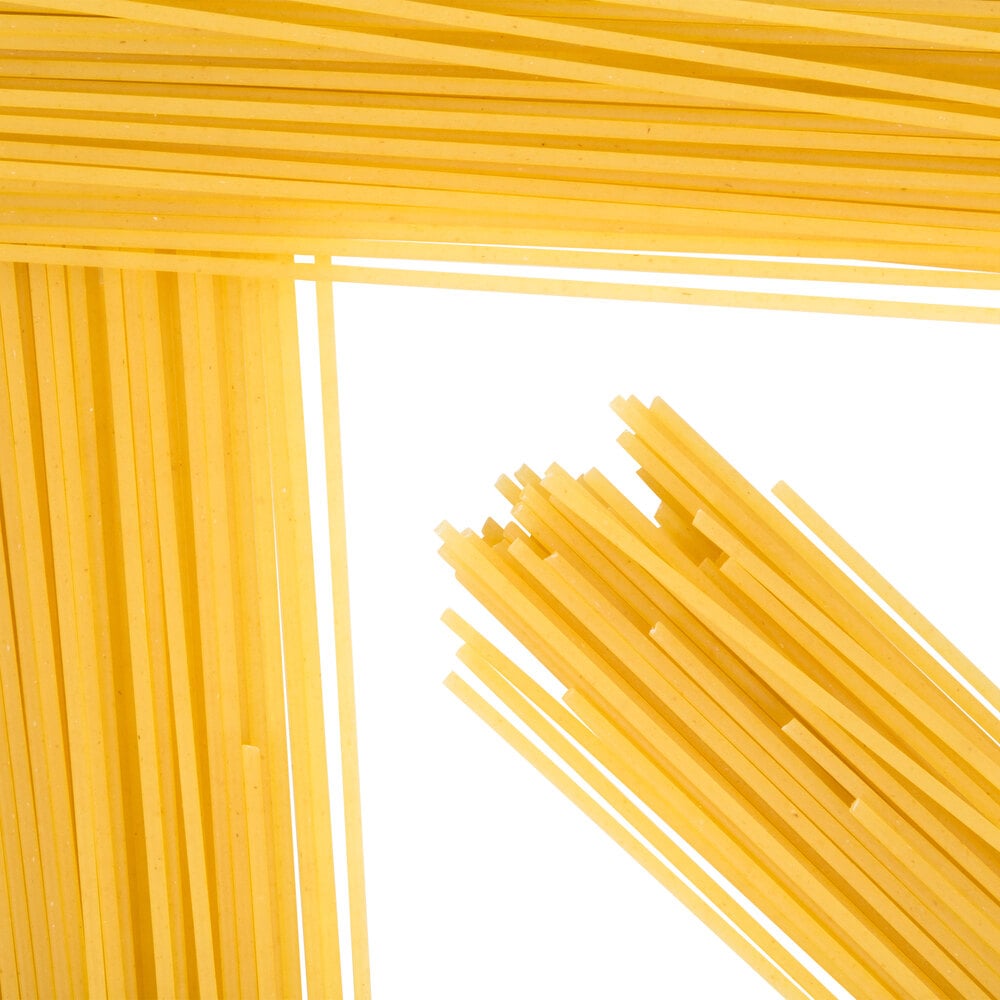
2. Spaghetti
Spaghetti noodles are thin round strands that are about 10" long. These noodles pair well with marinara sauce, so much so that the dish is named after the type of pasta.
Cooking time:
- Fresh: 2 - 3 minutes
- Dry: 9 - 11 minutes
Best for: Tossing with sauce
Ideal sauces and ingredients: Tomato, pesto, meat, seafood

3. Gnocchi
Gnocchi are cylindrical, soft dumplings usually made with potatoes. Oftentimes, they’re rolled with ridges to hold sauces and create a unique texture.
Cooking time:
- Fresh or Frozen: Place gnocchi in boiling water. Once they are fully cooked, they will float to the surface. Wait 10 - 15 seconds. Then, scoop them out with a slotted spoon
Best for: Tossing with sauce, soup, baked dishes
Ideal sauces and ingredients: Tomato, cream, pesto, cheese, meat
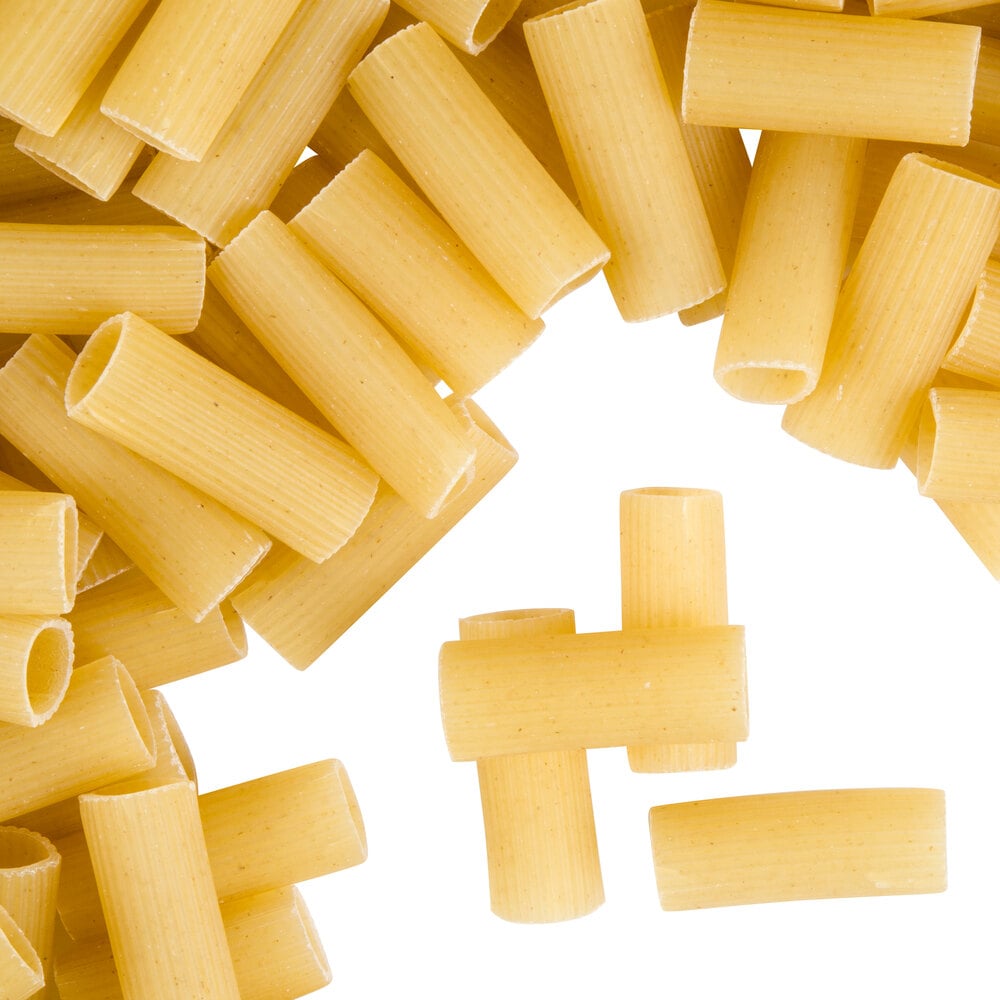
4. Rigatoni
Rigatoni noodles are short tubes about 1 1/2" long and 3/4" in diameter with ridges. Not only does it retain sauce well, but its shape also allows meat and cheese to be incorporated into dishes.
Cooking time:
- Fresh: 5 - 6 minutes
- Dry: 11 - 13 minutes
Best for: Tossing with sauce, baked dishes
Ideal sauces and ingredients: Chunky meat or vegetable, cream, cheese

5. Tortellini
Tortellini is a stuffed pasta originating from Bologna and northern Italy. It’s a ring-shaped pasta that is typically stuffed with meat, cheeses, or vegetables.
Cooking time:
- Fresh: 5 minutes
- Dry: 10 - 11 minutes
Best for: Tossing with sauce, soups, pasta salad
Ideal sauces and ingredients: Alfredo, cream, cheese, garlic, tomato
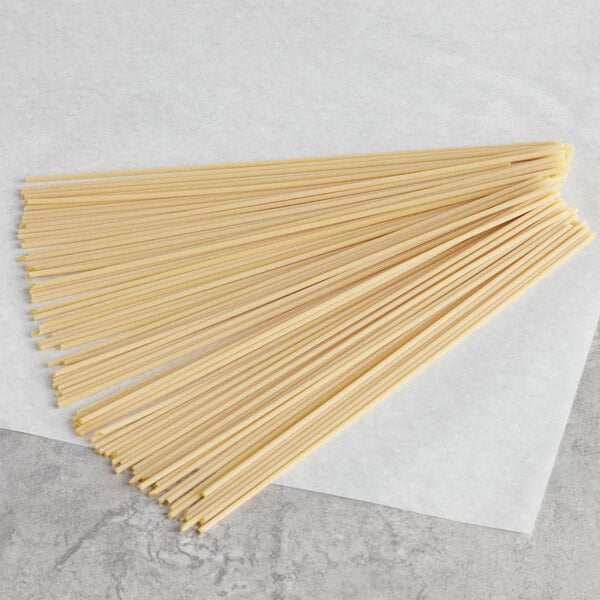
6. Bucatini
Another pasta in the long, thin, round family, bucatini is thicker than spaghetti with a hollow center. The hole in the center allows the sauce to fully permeate the pasta, causing the dish to burst with delicious flavors.
Cooking time:
- Fresh: 3 - 5 minutes
- Dry: 8 - 12 minutes
Best for: Tossing in sauce, Bucatini all’Amatriciana
Ideal sauces and ingredients: Meat sauces, vegetables, oil, tomato, cheese, spices
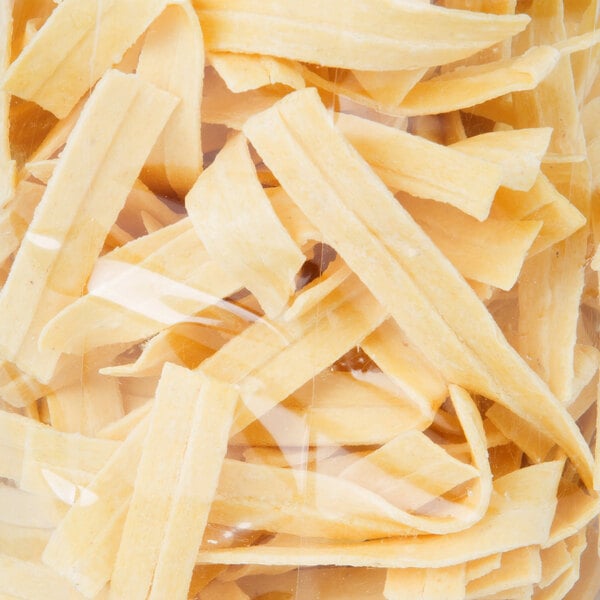
7. Pappardelle
Originating from Tuscany, pappardelle noodles are wide, long, flat pasta strands with a rough texture. This pasta type is thicker and broader than other flat pasta types and pairs well with thick, hearty sauces like ragus.
Cooking time:
- Fresh: 3 - 4 minutes
- Dry: 7 - 10 minutes
Best for: Pork or beef ragu
Ideal sauces and ingredients: Cream of mushroom, ragu, Bolognese, meats, cheeses

8. Ravioli
Ravioli is an Italian dumpling filled with meat, ricotta cheese, and/or vegetables. Most ravioli are square-shaped with ridged edges and topped with marinara sauce.
Cooking time:
- Fresh: 3 - 4 minutes
- Frozen: 10 - 12 minutes
Best for: Tossing with sauce
Ideal sauces and ingredients: Tomato sauce, parmesan cheese, beef
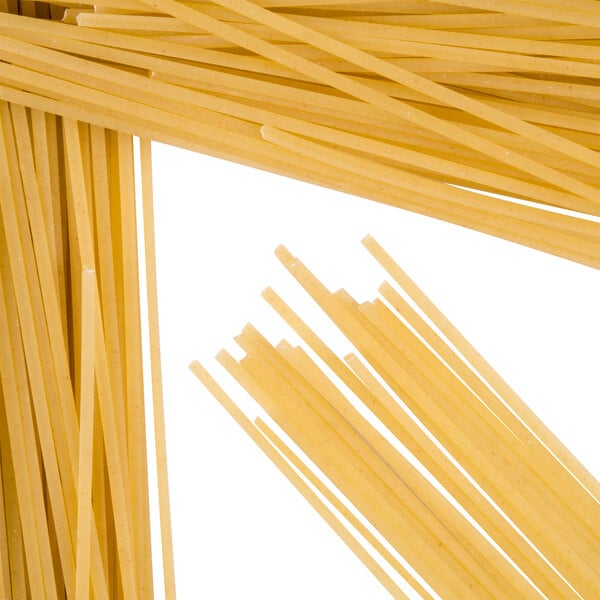
9. Linguine
Similar to fettuccine, linguine is a thinner pasta with long, flat noodles about 1/8" wide.
Cooking time:
- Fresh: 2 - 3 minutes
- Dry: 10 - 12 minutes
Best for: Tossing with sauce
Ideal sauces and ingredients: Tomato, pesto, olive oil, seafood

10. Fettuccine
Known for its presence in chicken alfredo dishes, fettuccine is a long, flat egg noodle about 1/4" wide.
Cooking time:
- Fresh: 3 - 4 minutes
- Dry: 10 - 12 minutes
Best for: Tossing with sauce
Ideal sauces and ingredients: Alfredo, cream, cheese, meat, seafood
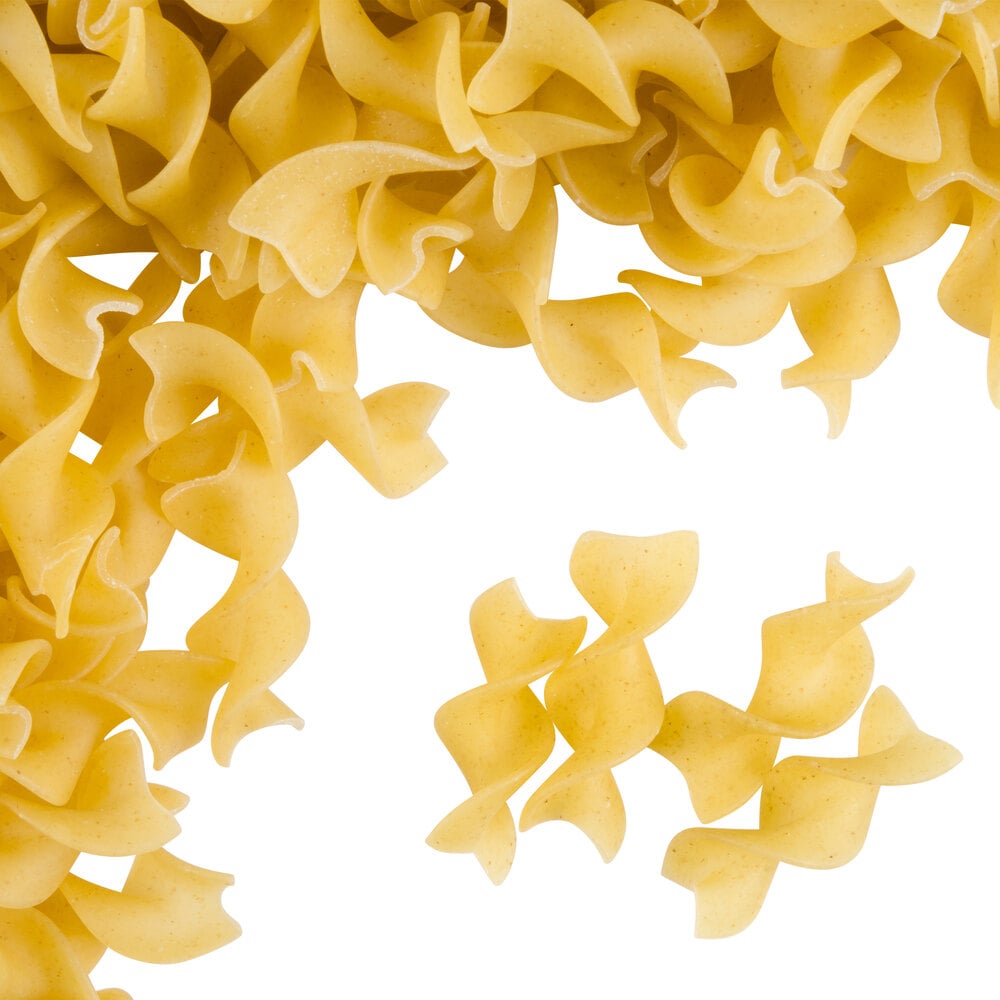
11. Egg Noodles
Made with eggs and flour instead of water, egg noodles are hearty, rich in flavor, and deep in color. They come in many shapes and are easy to make from scratch. Egg noodles are also a significant element of Asian dishes with specific Asian egg noodle varieties available on the market.
Cooking time:
- Fresh: 3 - 5 minutes
- Dry: 6 - 8 minutes
Best for: Adding into thicker stews, soups, sauces, and casseroles
Ideal sauces and ingredients: Thick stews, stroganoff, butter, chicken broth
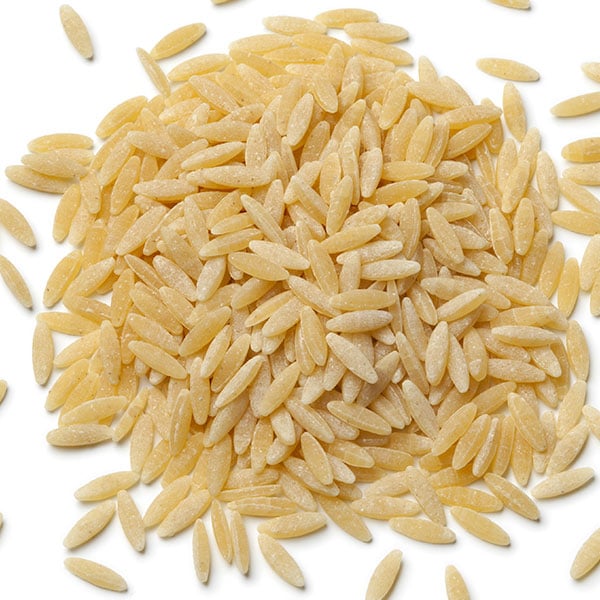
12. Orzo
One of the smallest pasta noodles on this list, orzo is a tiny, rice-shaped noodle. It’s very versatile with a unique texture and flavor.
Cooking time:
- Fresh: 4 - 6 minutes
- Dry: 10 - 12 minutes
Best for: Salads, soups, and cheesy pasta dishes
Ideal sauces and ingredients: Tomatoes, olives, parsley, mushrooms, olive oil, cheese, broth
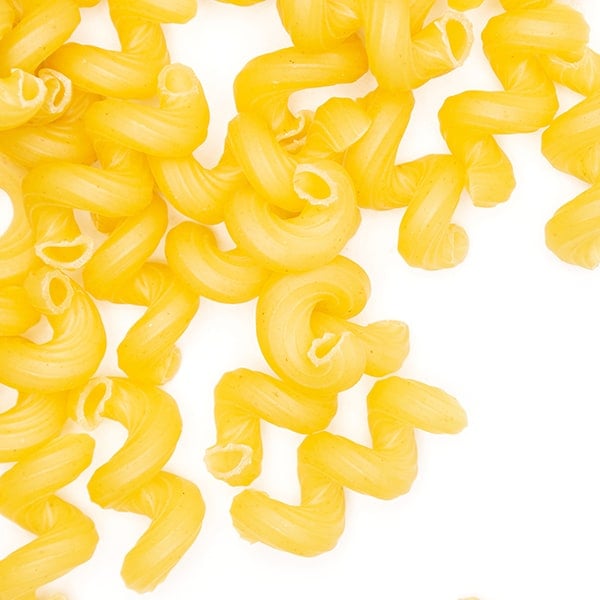
13. Cavatappi
Cavatappi is a corkscrew-shaped pasta with ridges scored into the shape to better adhere to the sauce.
Cooking time:
- Fresh: 6 - 8 minutes
- Dry: 9 - 11 minutes
Best for: Baked dishes, salads, or tossing with sauce
Ideal sauces and ingredients: Pesto, sundried tomatoes, broccoli, mushrooms, peas, cream sauces, and hearty pomodoro
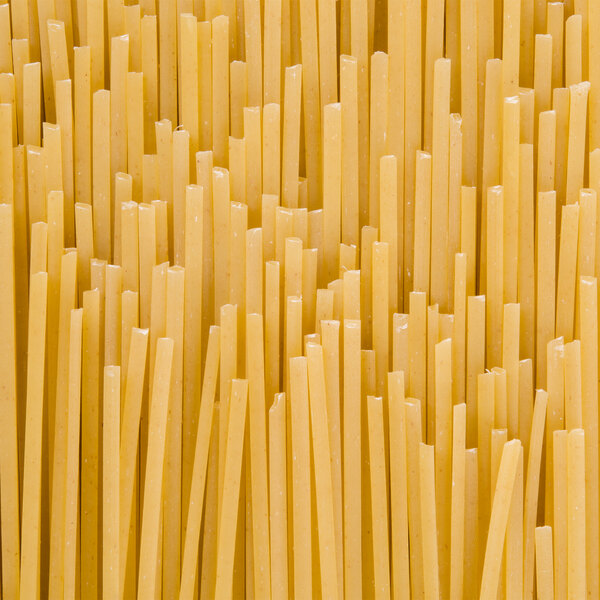
14. Tagliatelle
Originating in northern Italy, tagliatelle is a long, flat, ribbon-like noodle similar to fettuccine. It pairs well with chunky meat sauce like Bolognese.
Cooking time:
- Fresh: 2 - 4 minutes
- Dry: 7 - 10 minutes
Best for: Tossed in sauce
Ideal sauces and ingredients: Creamy sauces, mushrooms, tomatoes, meat
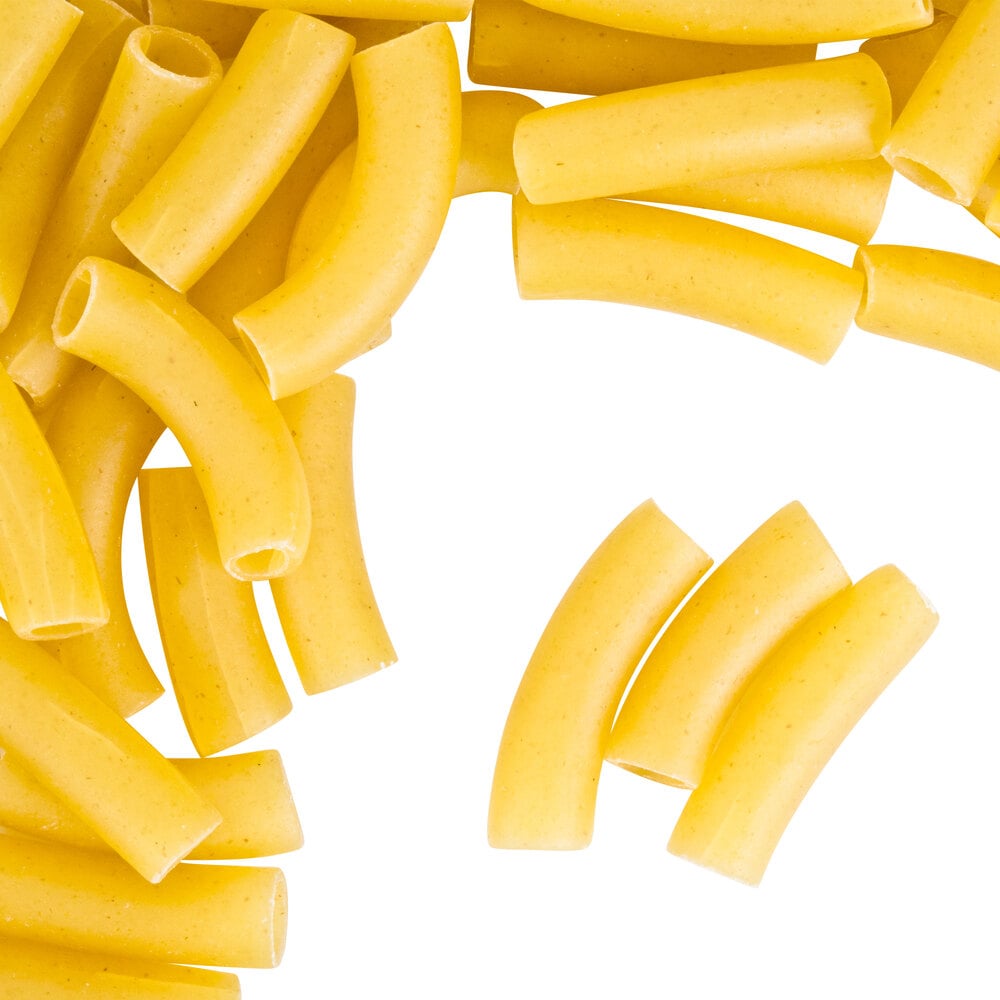
15. Ziti
Ziti noodles are medium-width tubes that are at least 2" long. It’s popular in baked dishes with tomato sauces such as baked ziti.
Cooking time:
- Fresh: 3 - 4 minutes
- Dry: 10 - 12 minutes
Best for: Baked dishes
Ideal sauces and ingredients: Light tomato, olive oil, cream, cheese
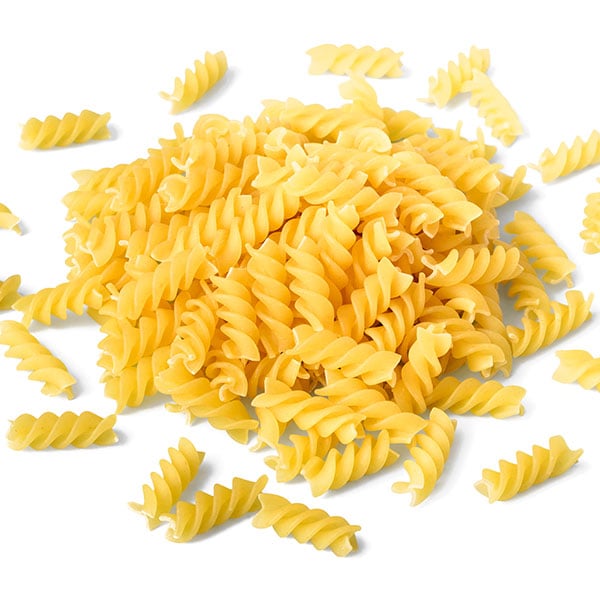
16. Fusilli
Fusilli is a short, thick, spiralized pasta, which allows it to hold sauce well. It has tighter spirals than cavatappi and pairs well with creamy sauces.
Cooking time:
- Fresh: 2 - 4 minutes
- Dry: 10 - 12 minutes
Best for: Tossing with sauce or making a cold pasta salad
Ideal sauces and ingredients: Alfredo, cream, cheese, tomato, fresh or sauteed vegetables, meat

17. Penne
There are two types of penne pasta: penne rigate and penne lisce. All penne pasta are small tubes typically 2 - 4" long, available in white or tri-colored varieties. However, penne rigate has grooves while penne lisce is smooth.
Cooking time:
- Fresh: 3 - 4 minutes
- Dry: 10 - 12 minutes
Best for: Tossing with sauce
Ideal sauces and ingredients: Chunky tomato, meat, cream, vegetables
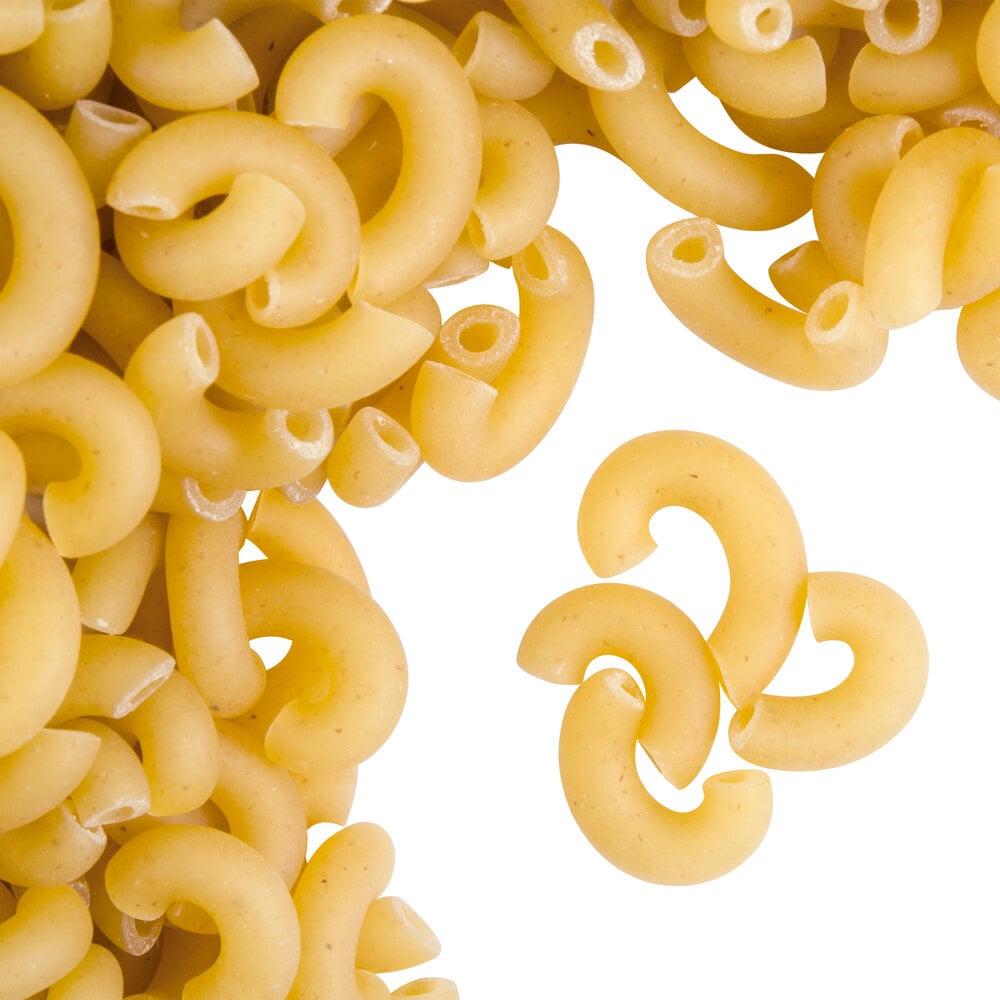
18. Macaroni
Macaroni is a favored pasta noodle shape with short, C-shaped tubes. It’s present in popular dishes like macaroni and cheese.
Cooking time:
- Fresh: 3 - 4 minutes
- Dry: 6 - 8 minutes
Best for: Baked dishes, salads, soups, macaroni and cheese
Ideal sauces and ingredients: Cheese, butter, broth

19. Capellini
Capellini is a stick-shaped pasta with long, thin strands. It has a narrower diameter than spaghetti but a wider diameter than angel hair.
Cooking time:
- Fresh: 2 - 3 minutes
- Dry: 3 - 5 minutes
Best for: tossing with chunky pomodoro sauce
Ideal sauces and ingredients: Hearty tomato and meatballs

20. Rotini
Rotini is another spiral-shaped pasta that retains sauces and ingredients well. It’s often available in white or tri-colored options, which allow you to choose between unique flavors.
Cooking time:
- Fresh: 4 - 5 minutes
- Dry: 10 - 12 minutes
Best for: Tossing with sauce, pasta salad
Ideal sauces and ingredients: Tomato, cream, vinaigrette, meat
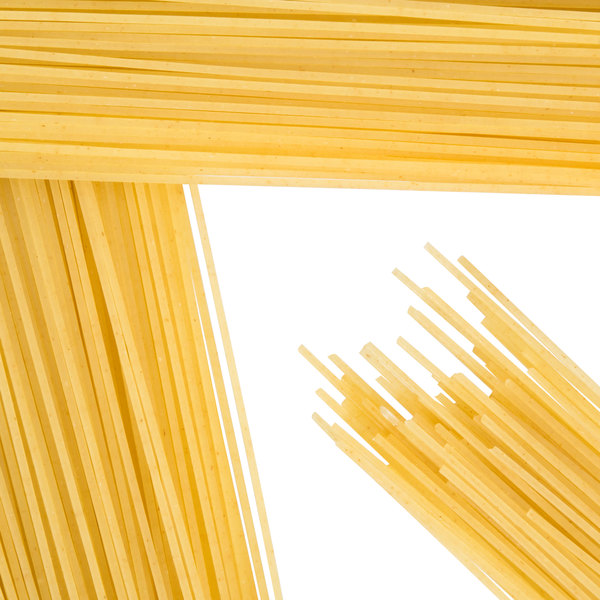
21. Angel Hair
Angel hair is very fine, delicate strands of long pasta. It has a round shape, closer to spaghetti than fettuccine.
Cooking time:
- Fresh: 2 - 3 minutes
- Dry: 3 - 5 minutes
Best for: Tossing with light sauces
Ideal sauces and ingredients: Light tomato, olive oil, light cream, butter, seafood
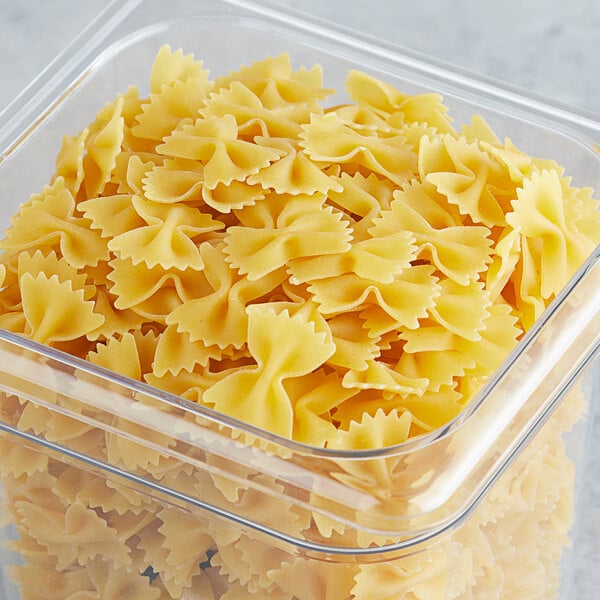
22. Farfalle
Commonly known as bowtie pasta, farfalle noodles are squares with ridged ends that are pinched in the middle to form a bowtie shape. Their versatility allows them to be served in both hot and cold pasta dishes.
Cooking time:
- Fresh: 2 - 3 minutes
- Dry: 11 - 12 minutes
Best for: Salads, baked, or tossed in sauce
Ideal sauces and ingredients: Creamy tomato sauce, cream, oil, lemon garlic sauce, olives, feta cheese
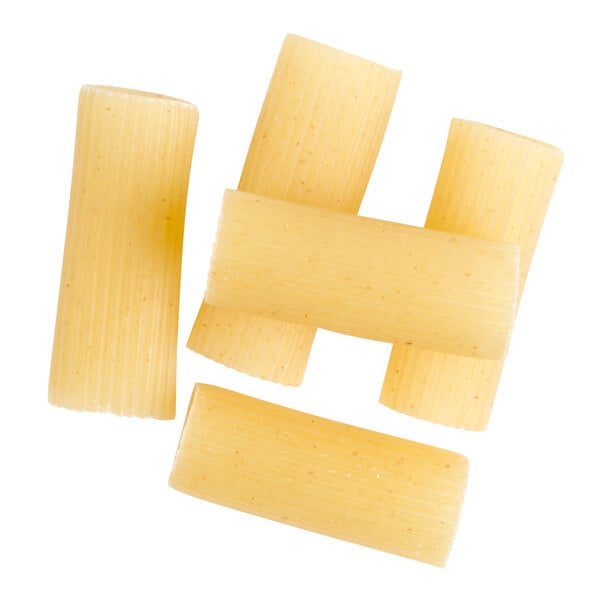
23. Paccheri
Paccheri is a tubular pasta in the shape of a large, hollow cube. It is often smooth, but some varieties have ridges to better hold sauces.
Cooking time:
- Fresh: 5 - 6 minutes
- Dry: 7 - 10 minutes
Best for: Tossing in sauce
Ideal sauces and ingredients: Pesto, tomato, oil, butter, vegetables
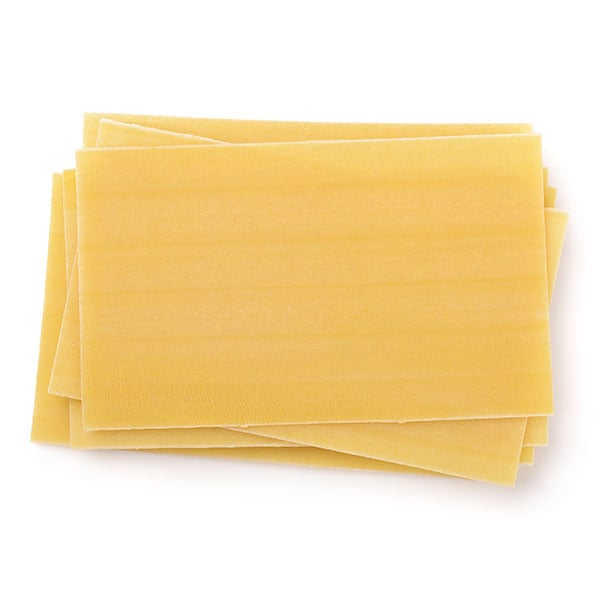
24. Lasagna Noodles
Also known as lasagna noodles, lasagna noodles are long, wide, flat, and sometimes have ridges on the borders. They serve as building blocks for casseroles and layered dishes.
Cooking time:
- Fresh: At room temp, build into lasagna
- Dry: Cook for 6 - 8 minutes, then build into lasagna
Best for: Building lasagnas
Ideal sauces and ingredients: Cream, cheese, meat, and vegetables
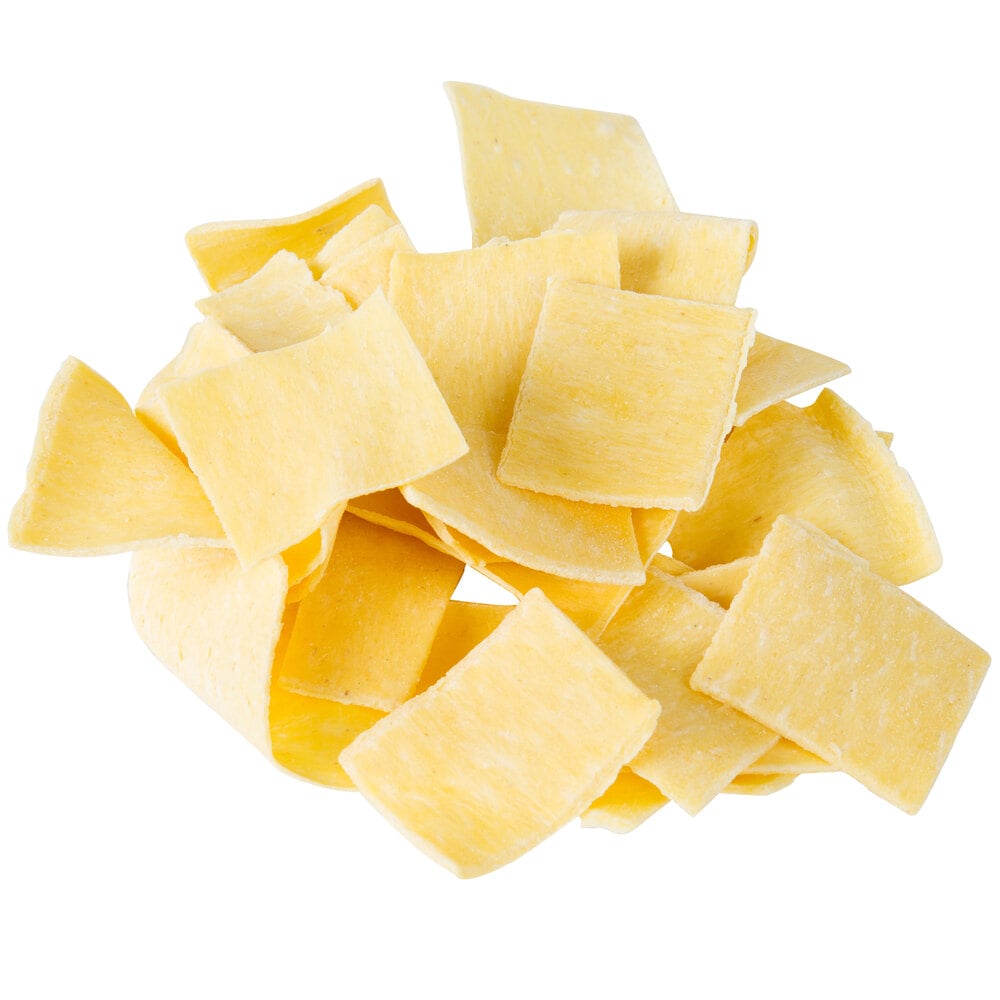
25. Pot Pie Squares
Pot pie squares are square, flat noodles usually measuring 1". They work well in all kinds of soups but are used most often in chicken pot pie soup.
Cooking time:
- Fresh: 8 - 10 minutes
- Dry: 12 - 15 minutes
Best for: Chicken pot pie soup
Ideal ingredients: Broth, celery, onions, carrots, peas, chicken
When creating a pasta-based dish, prepare all other ingredients in the recipe first, including sauce, vegetables, seafood, and meats. Since pasta is best-served as soon as it's cooked, you can add the finished noodles to your already-prepared dish. When cooking pasta, keep these tips in mind:
- Use 4 - 6 qt. of water for every 1 lb. of pasta.
- Boil water and prepare pasta in a pasta cooker to eliminate the use of a colander.
- Add 1 tbsp. of sea salt per 1 lb. of pasta to boiling water to add flavor to noodles.
- Add 1 tbsp. of olive oil per 1 lb. of pasta to boiling water to prevent noodles from clumping together once drained.
- While cooking, frequently stir pasta with a wooden spoon to prevent clumping.
- For al dente pasta, set your timer for one minute less than the minimum cooking time specified on the package.
- Immediately after the timer goes off, spoon a few noodles out of the pot using a pasta server or slotted spoon to see if the pasta is al dente or soft enough for your preference. If done, drain immediately.
- Rinse cooked, drained pasta in ice water to prevent it from cooking further.
- To know how much pasta to serve per person, try using 2 oz. of dried pasta per person for a small course, and 4 oz. of dried pasta per person for the main course.
While the shape of pasta impacts the flavor and texture of your dish, the quality of a meal is also affected if you use fresh pasta vs dry pasta. Fresh pasta has distinct flavors, aromas, and nutritional value but a short shelf life. Comparatively, dry pasta is mass-produced and can be stored almost indefinitely, but the flavors fade the longer it remains stored.
Choosing between fresh pasta vs dry pasta often boils down to the individual restaurant's needs. An authentic Italian restaurant requires higher quality for its signature pasta dishes, while a chain operation might not serve pasta often enough to justify the expense of fresh pasta. Knowing your establishment's brand and menu helps you determine which type of pasta is right for you.
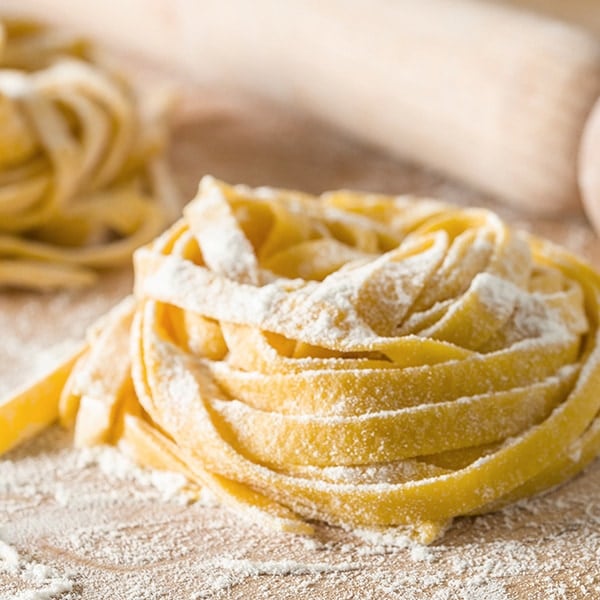
Fresh Pasta
Fresh pasta is typically made from white flour, and eggs are substituted in place of water to provide extra moisture. A pasta machine or cutter then forms the noodles. The shaped noodles are then left out to partially dry. Once the pasta is ready, add your fresh pasta to boiling water and cook just like dry pasta, but for less time.
Benefits of Fresh Pasta
- Has a fresher, more authentic, and more flavorful taste
- Faster cooking time
- Best served with delicate sauces, olive oil, or creamy alfredo
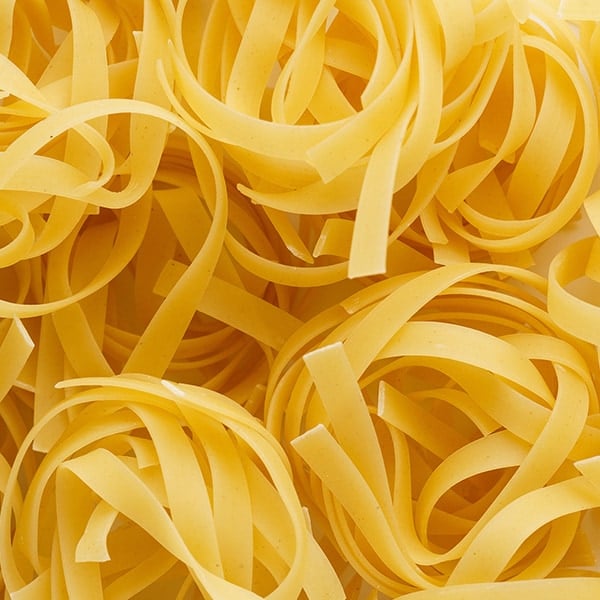
Dry Pasta
Dry pasta is made from semolina or "00" flour and water. These ingredients are mixed into a paste, pushed through molds, and cut into different types of pasta shapes. The noodles then undergo a drying process that extracts all the moisture. Since dry noodles do not contain liquid, there are a few benefits to buying them:
Benefits of Dry Pasta
- Longer shelf life than fresh noodles (can last up to two years if the packaging is unopened)
- Can also be cooked al dente, whereas fresh pasta has a softer texture once cooked
- Best for soups, casseroles, and dishes with heartier sauces
If you've looked at a recipe or Italian menu, you may have been confused by some of the vocabulary used to describe pasta. Most pasta vocabulary comes from the Italian language, which is not immediately self-explanatory. Knowing these terms allows you to cook pasta according to the best practices of the masters of pasta themselves.
Before experimenting with different pasta dishes, take time to understand pasta terms frequently used in the kitchen.
- Al dente: Translated as "to the tooth" in Italian, al dente refers to fully cooked pasta that is still a bit firm. This consistency gives it an appealing texture.
- Al forno: A pasta, pizza, or a different Italian dish baked in the oven.
- Alfredo: Alfredo is a white sauce made with cream, butter, parmesan cheese, and black pepper. Ironically, alfredo is not a traditional Italian sauce despite what many believe. It is an American derivative of the French mother sauce bechamel.
- Asiago: Asiago is a favored hard Italian cheese used for grating. Add it to sauces or use it as a garnish.
- Bolognese: Bolognese, pronounced "bow-luh-nayz," is a ragu pasta sauce native to the Bologna region of Italy. Traditionally, it contains finely chopped meats, onions, celery, carrots, and tomato paste.
- Carbonara: Carbonara is a pasta dish made from eggs, hard, grated cheese such as Pecorino or Parmesan, and cured meat, traditionally guanciale.
- Durum: Durum is a hard wheat variety high in protein and gluten. It also has a low moisture content and a long shelf life.
- Fra diavolo: Fra diavolo is a spicy, tomato-based pasta sauce with crushed red pepper flakes.
- "Ini" and "oni": If you're trying to choose between fusillini, fusilli, and fusillioni, the pasta names that end with the suffix -ini will be the smaller versions, and the pasta names that end with the suffix -oni will be the larger versions.
- Pomodoro: Pomodoro is simply a meatless tomato sauce. In Italian, the word "pomodoro" translates to "tomato" in English.
- Primavera: Meaning "spring" in Italian, primavera consists of al dente pasta tossed with an equal amount of sauteed spring vegetables and drizzled with light olive oil.
- Rigate: The term rigate means "with ridges." These noodles have more texture, so they'll cling to sauces, seasonings, meats, and vegetables when lifted from the plate.
- Semolina: Semolina flour is the course flour used to make dry pasta. With a base consisting of durum wheat, its high gluten and protein content provides additional resistance and elasticity, thus giving dry pasta the ability to hold its shape when cooking.
- Soffritto: This cooking term means "under-fried." Typically, vegetables are lightly fried in oil before being added to the sauce for further cooking.
Use our types of pasta chart to see the difference between several common pasta shapes.
Now that you understand the difference between the various pasta types and some typical pasta terms, you need to decide what color of pasta to use. Like bread, you can also choose between white and whole wheat pasta. Tri-color pasta is also a readily available noodle type. When making your own, try adding spinach, squid ink, pumpkin or butternut squash puree, and even beetroot powder or puree to your pasta dough for a trendier dish.

White Pasta
The base of white pasta is refined flour, which lacks the nutritional value of its counterparts. However, the appeal of white pasta lies in its easy pairing with sauces and pasta toppings. Moreover, its color is not off-putting to diners.
- Made from 100% durum wheat semolina
- Neutral, appetizing color that contrasts well with all types of sauces

Wheat Pasta
For a more nutritious option, wheat pasta contains more fiber and protein than white pasta. These attributes improve the digestion of carbohydrates and allow for increased blood sugar control. Since wheat pasta has a distinctive flavor and texture, some sauces and pasta toppings do not pair well with this pasta type.
- Made from whole wheat flour for higher protein content
- Higher nutritional content than white pasta, making it appealing to health-conscious customers

Tri-Color Pasta
While many believe that the unique colors come from food coloring, the pigment of tri-color pasta comes from natural additives such as spinach, tomatoes, carrots, or pumpkin. These ingredients affect the flavor of the pasta, so sauce pairings and toppings are tricky to find.
- Offers a mix of white, green, and red noodles for an enhanced visual appeal ideal for pasta salads and kids' meals
- Includes spinach and tomato-infused noodles for slight diversity in flavor
Related Resources

January 2025 WebstaurantStore Coupon Code
The holiday season is over, and to ring in the new year and combat the post-holiday blues, you can find amazing deals on important items here at WebstaurantStore all January long! From essential coffee service equipment to ingredients and supplies for your favorite winter recipes, we have a slew of great deals to warm you up this cold season! Check out our selection of sale items below and don't forget to enter the code FROSTY26 at checkout to enjoy 10% off your purchases! Looking to save even more? Check out the new Webstaurant Rewards® Visa Business Card ! Sign up for a new card today and start earning rewards on every WebstaurantStore purchase, and save on a WebstaurantPlus subscription. Explore incredible deals on winter disposable item
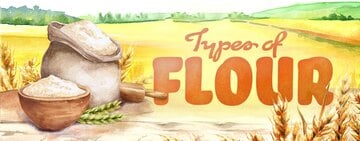
Types of Flour
Flour is the fundamental ingredient of many baked goods - including bread, pastries, pies, and cakes - as well as pasta and pizza dough. However, not all flour is alike. Various factors, such as protein content, how the flour is processed, and the grain, affect how you use it while baking. Whether you own a bakery , cafe, or restaurant, it's imperative to use the best types of flour to produce high-quality food and desserts. We explore the different kinds of flour, their uses, processing considerations, and protein content to help you find the best flour to meet the needs of your establishment. Shop All Flour Use the following links to learn more about different types of flour: Bleached vs Unbleached Flour Different Types of Flour Types of
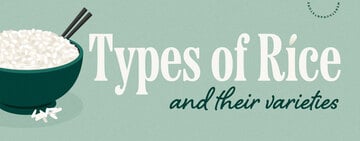
Types of Rice
Rice is a staple in any kitchen, and with so many different types, it lends itself to an endless number of recipes. Each type of rice has its own taste, texture, and unique properties that work best in different applications. Plus, rice is naturally gluten-free, making it an easy way to offer gluten-free entrees to accommodate alternative diets on your menu. This guide examines factors that differentiate types of rice, from nutty basmati to fragrant jasmine, so you can choose the best rice for your next recipe. Shop All Bulk Rice Use the following links to explore the types of rice out there, so you can make more informed purchases for your menu! Different Types of Rice Long vs Short Grain Rice Is Rice a Grain? Rice FAQs Rice Types Chart


